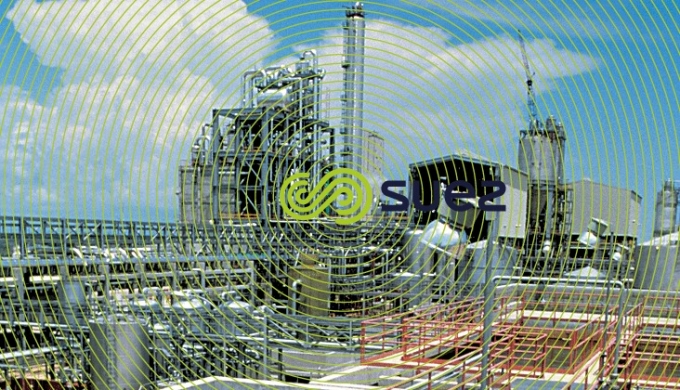nature of the industrial effluents
Reading time:While household wastewater properties are virtually identical, the extreme diversity of industrial wastewater (IWW) requires an investigation to be carried out for each type of industry and specific processes will frequently be needed.
In addition to the essential analytical data, thorough information on production processes and system organisation is of the utmost importance if we are to understand requirements and produce a satisfactory treatment system. Chapter industrial processes and effluent treatment, provides many examples of treatment systems for these effluents, organised by industry.
origin of the effluents
There are four major categories of industrial discharge:
production effluent
Most processes discharge pollution are produced by water coming into contact with gases, liquids or solids.
Discharge can be either continuous or intermittent. In some cases, discharges may only be produced during a few months of the year (seasonal processing in the agri-food industry: e.g. the two-month sugar beet season).
As a rule, if production output is regular, pollution flows will be known; however, when industries are governed by specific campaigns (synthesising chemicals, pharmaceuticals, parachemicals), discharge analysis becomes more problematic due to the constantly changing nature of these discharges.



Consequently, the inclusion of homogenising tanks becomes essential. These tanks are also used to feed treatments, especially biological treatments, should production be interrupted.
specific effluent
Some effluents are likely to be segregated:
- either with a view to undergoing a specific treatment with, if applicable, recovery of raw materials and/or recyclable water during production;
- or before being routed to a storage tank for weighted flow reinjection into the treatment system (if necessary, after pre-treatment).
This applies to:
- pickling and galvanoplasty baths; used sodium hydroxide; ammonia water from coking plants;
- paper mill condensates, «stock water» from chemical and agri-food industries;
- toxic discharges and concentrated discharges.
utility effluents
- sluice water (canteens…);
- boiler water (boiler blowdown, regeneration eluates);
- make-up water processing sludge;
- cooling water blowdown.
occasional discharges
These must not be overlooked and may involve:
- accidental product leakages during handling or storage;
- production tool or floor washing water;
- polluted water including storm water that can also create a hydraulic overload.
This type of effluent often has to be routed to an "observation" tank.
general effluent characteristics
The following data is essential for the production of a satisfactory definition of a wastewater treatment plant:
- typical production, capacities and cycles, raw materials consumed;
- composition of make-up water in the factory;
- possibility of separating out discharges and/or recycling;
- daily volume of effluent per category;
- average and maximum daily ouptut (duration and frequency per category);
- average, maximum, pollution flow (frequency and duration) per discharge category and for pollution specific to the industry concerned.
Information on secondary, albeit occasional, pollution can often prove valuable as this type of pollution is capable of seriously affecting the operation of certain treatment unit equipment (adhesives, tars, fibres, oils, sand, toxic matter…).
When designing a new plant, this data gathered after production analyses have been completed, needs to be compared with data from existing similar plants.
Knowledge of make-up water composition is often necessary.
nature of the pollution
Significant input of the different types of pollution listed below will be classified on the basis of treatment methods that can be justified:
insoluble elements that can be separated physically, with or without flocculation
- floting matter (grease, aliphatic hydrocarbons, tars, organic oils, resins…);
- suspended solids (grit, oxides, hydroxides, pigments, colloidal sulphur, latex, fibres, filtration additives…).
organic elements that can be separated through adsorption
- colorants, detergents, phenol compounds, nitrated derivatives, chlorinated derivatives;
elements that can be separated through precipitation
- metals: Fe, Cu, Zn, Ni, Aℓ, Hg, Pb, Cr, Cd, Ti, Be that can be precipitated within a certain pH range, sulphides;
- anions: PO43– SO42–, SO32–, F–.
elements that can be separated by degassing or stripping
- H2S, NH3, SO2, CO2, phenols, light or aromatic hydrocarbons, chlorine derivatives.
elements that may require an oxygen reduction reaction
- CN, Cr(VI), S2–, Cℓ2, NO2–.
ineral acids and bases
- hydrochloric, nitric, sulphuric and hydrofluoric acids;
- various bases.
elements that can be concentrated through ion exchanges or through reverse osmosis
- radionuclides such as I*, Mo*, Cs*;
- strong base and acid salts, ionised organic (ion exchange) or non-ionised (reverse osmosis) compounds.
biodegradable elements
E.g. sugars, proteins, phenols. After acclimatisation, some organic compounds such as formol, anilin, detergents and even aromatic hydrocarbons can be biodegradable in the same way as some mineral compounds (S2O32–, SO32–).
elements that are oxidised using a poweful oxidant (O3, O3 + H2O2)
Many organic compounds that are more or less adsorbable: pesticides, macromolecual compounds, PAH, PCB … detergents.
coloration
Industrial effluents can be very highly coloured. This colouring is created by colloids (pigments, sulphides) or by dissolved matter (organic matter, nitrated derivatives).
Form an analytical viewpoint, we need to take into account:
- the fact that the IWW COD/BOD5 ratio is often very different to the ratio found in UWW. It will change during the various stages of the treatment and the final ratio may be higher than 10;
- the presence of highly toxic products can mask the presence of biodegradable matter and provide extremely misleading measurements of "potential" BOD5.
Please refer to chapter water analysis and treatability for outline concepts dealing with wastewater biological treatability.
Bookmark tool
Click on the bookmark tool, highlight the last read paragraph to continue your reading later












